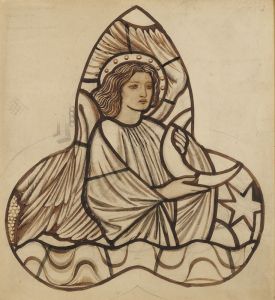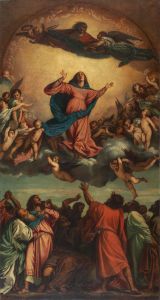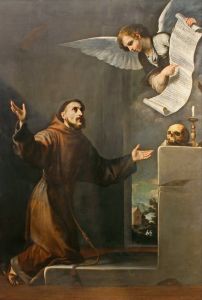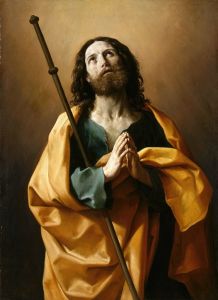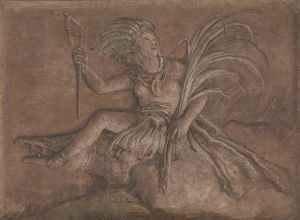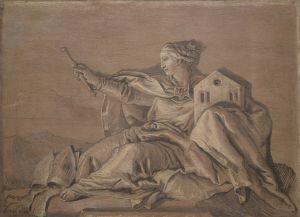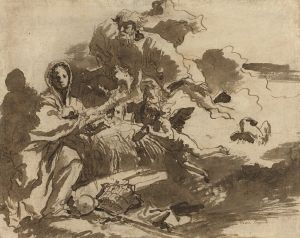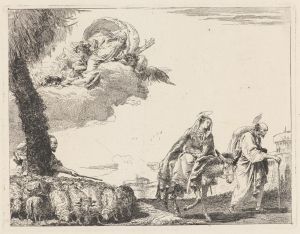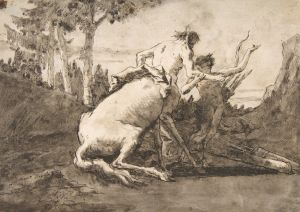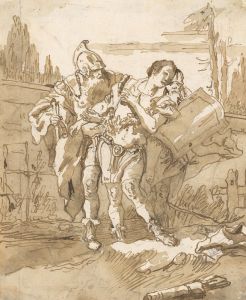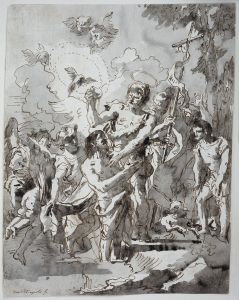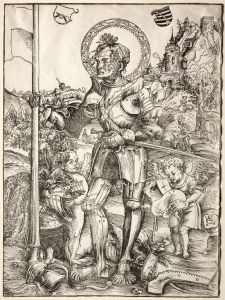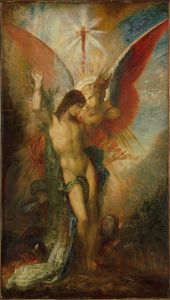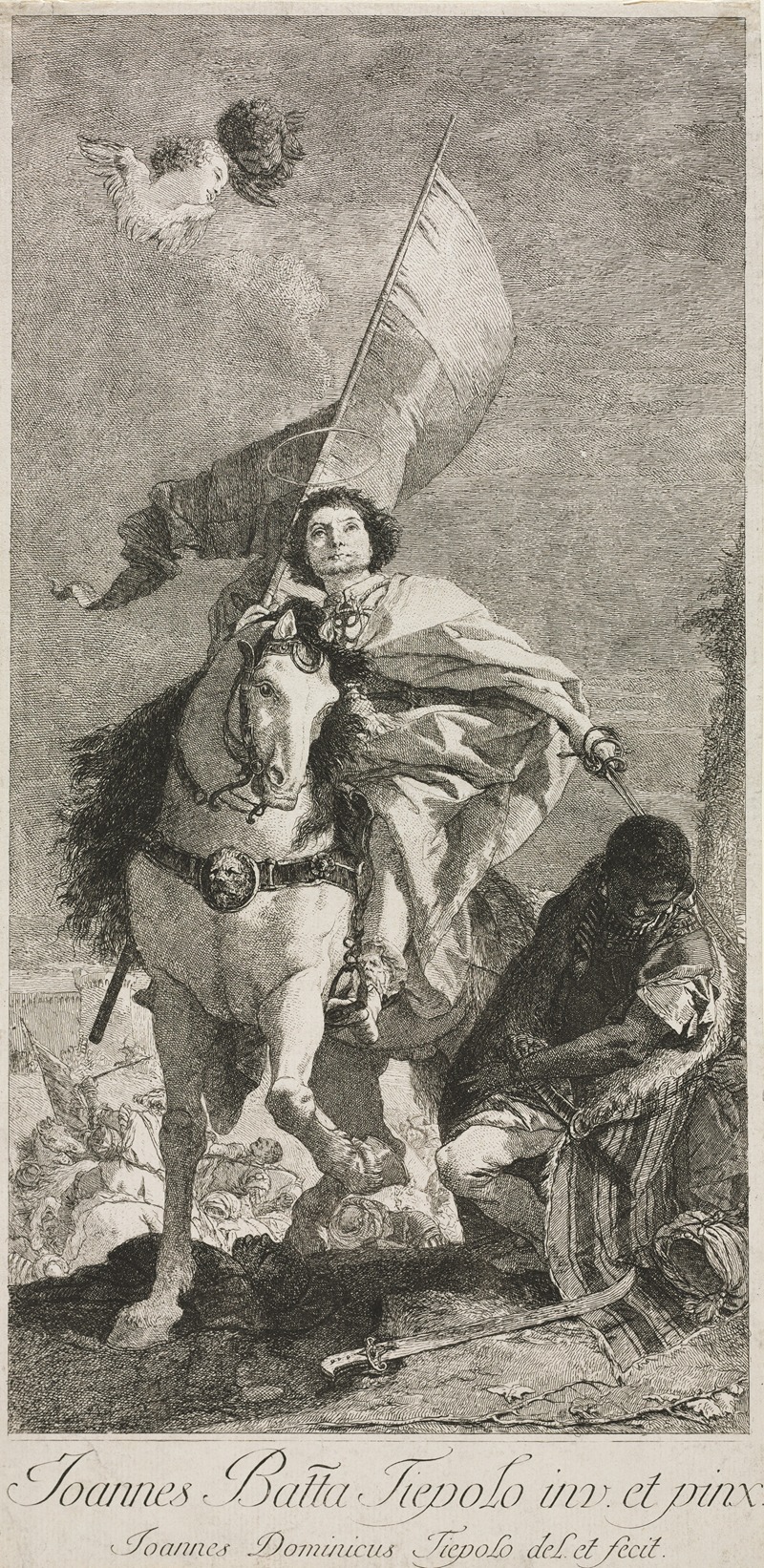
St. Jacques
A hand-painted replica of Giovanni Domenico Tiepolo’s masterpiece St. Jacques, meticulously crafted by professional artists to capture the true essence of the original. Each piece is created with museum-quality canvas and rare mineral pigments, carefully painted by experienced artists with delicate brushstrokes and rich, layered colors to perfectly recreate the texture of the original artwork. Unlike machine-printed reproductions, this hand-painted version brings the painting to life, infused with the artist’s emotions and skill in every stroke. Whether for personal collection or home decoration, it instantly elevates the artistic atmosphere of any space.
Giovanni Domenico Tiepolo, an Italian painter and printmaker, was an influential figure in the 18th-century art scene. He was the son of the renowned artist Giovanni Battista Tiepolo and followed in his father's footsteps, developing a distinctive style that combined elements of the Rococo and Neoclassical movements. One of his notable works is "St. Jacques," which reflects his mastery in capturing religious themes with a unique flair.
"St. Jacques" is a painting that exemplifies Tiepolo's skill in rendering religious subjects with a sense of drama and emotion. While specific details about the painting's creation, such as the exact date and commission, are not well-documented, it is consistent with Tiepolo's broader body of work, which often focused on religious and mythological themes. His paintings are characterized by their dynamic compositions, vibrant color palettes, and the ability to convey complex narratives through expressive figures and gestures.
In "St. Jacques," Tiepolo likely employs his signature use of light and shadow to create a sense of depth and movement. This technique, which he inherited and adapted from his father, allows the figures to stand out against the background, drawing the viewer's attention to the central themes of the painting. The use of light not only highlights the physical forms but also enhances the emotional and spiritual undertones of the scene.
Tiepolo's work is known for its attention to detail and the ability to capture the essence of the characters he depicts. In religious paintings like "St. Jacques," this often translates into a focus on the expressions and postures of the figures, which convey a sense of devotion and reverence. The artist's ability to infuse his subjects with life and emotion is a testament to his skill and understanding of human nature.
The painting is also a reflection of the broader artistic trends of the time, as the 18th century was a period of transition in the art world. The Rococo style, with its emphasis on elegance and ornamentation, was giving way to the more restrained and classical approach of Neoclassicism. Tiepolo's work often bridges these two styles, incorporating the decorative elements of Rococo with a more structured and balanced composition typical of Neoclassical art.
Giovanni Domenico Tiepolo's contribution to the art world extends beyond his paintings. He was also a prolific printmaker, and his etchings and drawings provide further insight into his artistic process and thematic interests. His works have been preserved in various collections and continue to be studied for their artistic and historical significance.
While specific information about "St. Jacques" may be limited, the painting remains an important part of Tiepolo's oeuvre, showcasing his ability to blend artistic styles and convey profound religious themes. His legacy as an artist is marked by his ability to capture the beauty and complexity of the human experience, making him a significant figure in the history of art.





